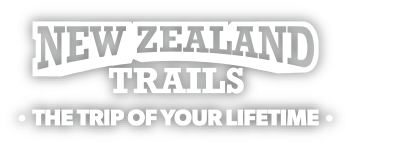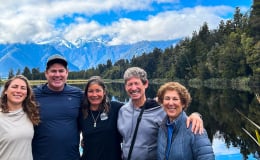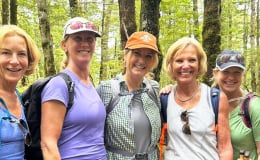
A Journey Through Time: The Whanganui River Journey
Nestled within the heart of New Zealand's North Island lies a hidden gem and magnificent natural wonder - the Whanganui River. Renowned for its pristine waterways, lush native forests, and rich cultural heritage, the Whanganui River Journey offers an unforgettable experience for nature enthusiasts and adventurers alike. Perhaps the most unique of New Zealand’s ten Great Walks, the Whanganui River Journey is like a journey back in time as you float through this Jurassic wonderland.
Where is the Whanganui River Journey?
The Whanganui River winds its way for 145km (90 miles), weaving through the lush native rainforest of Whanganui National Park. The journey begins in the town of Taumarunui and concludes at Pipiriki, offering a glimpse into the heart of New Zealand’s wilderness.

Explore the lush native forest of our North Island
Getting to the Whanganui River Journey:
Depending on where you’re travelling from, getting to Taumarunui can be somewhat of a challenge. For those travelling internationally the closest major airport is Auckland, some three and a half hours drive away. There are public transport options by bus (which take even longer) or you could catch a connecting flight to Taupo for a slightly closer starting point.
Once in Taumarunui, there are several options for getting to the start of your journey. Self-driving is an option but as your journey downriver is by nature a one-way event logistics of returning to your vehicle can be troublesome. Several tour operators do offer transport to the river's edge but our favourite option is as part of a small-group tour.

Float down the calm waters of the Whanganui River
Where to stay:
Accommodation options abound near the Whanganui River, catering to all budgets and preferences. Choose from cozy bed and breakfasts, charming lodges, or campgrounds nestled amongst the native bush. Camping is also permitted at designated sites along the river, offering a truly immersive experience, although it’s a lot more admin.
Best time to of year for the Whanganui River Journey:
The Whanganui River Journey can be enjoyed year-round, each season offering its own unique charm. Spring (September - November) boasts vibrant wildflowers and moderate temperatures, while summer (December - February) provides long sunny days and warm waters for swimming. Autumn (March - May) paints the landscape in stunning hues of red and gold, and offers the tranquillity of a less crowded river. No matter when you choose to explore the Whanganui River it’s guaranteed to be a trip to remember but if we’re picking favourites, we love to explore in Spring.
Other things to do in the area:
Beyond the captivating river journey, the Whanganui region boasts a diverse range of activities. Here at New Zealand Trails, our favourite addition to a journey down river is taking some time to explore The Bridge to Nowhere. As if springing from the forest itself this iconic landmark is one of New Zealand’s best kept secrets. Top this off with a thrilling jetboat ride and it’s an “only in New Zealand” experience you’re sure to remember for years to come. If this sounds like the kind of trip for you check out our New Zealand Great Walk Adventure – North.

Explore the Bridge to Nowhere with us!
The Whanganui River with New Zealand Trails
If exploring the Whanganui River is on your New Zealand bucket list we’d love to show you around. Our small group New Zealand adventure tours are the perfect way to explore all our country has to offer. Our local team of New Zealand travel experts will take care of all the details so you can relax and enjoy the adventure.
Once on your trip we’ll show you all our favourite places, from iconic locations to off the beaten track hidden gems, all while learning about our countries history and culture from our 100% New Zealand guides. So, pack your bags, grab your hiking boots, and embark on a journey through time on this iconic New Zealand Great Walk with us.
If you’d like to find out more grab a copy of our brochure or get in touch with the team today.







